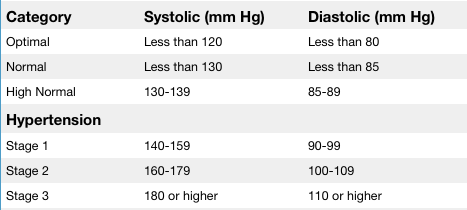How to take blood pressure
A little bit out of the orthopedic relax but definitively important information anybody can use. Blood pressure is the force exerted by the blood against the inner walls of the blood vessels. It is determined by the flow of the blood and by resistance to that flow. Blood pressure is expressed as systolic pressure over diastolic pressure. In arteries, blood pressure rises during systole and falls during diastole. A blood pressure reading is expressed as systolic pressure over diastolic pressure. Assessing blood pressure can be part of your normal assessment process.
Taking the blood pressure
Blood pressure is taken using a medical-grade sphygmomanometer and stethoscope.
- Seat the person in a quiet room with upper arm exposed. For best results, do not pull a tight sleeve up, which may create pressure on the upper arm.
- The cuff should be smoothly and firmly wrapped around the upper arm at heart level with its lower margin about an inch above the antecubital space.
- Locate the brachial artery on the inner side of th upper arm (approximately 1 inch above the bend in the elbow) and place stethoscope over the after applying minimal pressure. The stethoscope should no touch the cuff or its tubing.
- The arm should be relaxed and supported by you at an angle of 10 to 45 degrees.
- Make sure the air-release switch remains closed (turn knob clockwise).
- Rapidly inflate the cuff with quick, even pumps to 180 to 200 mm Hg.
- Gradually release the cuff pressure (about 3 to 5 mm per second) by slowly opening the air release knob (counterclockwise turn) noting the first sound. The systolic pressure is the result of turbulence from the rush of the blood as the formerly closed artery briefly opens during the highest pressure in the cardiac cycle.
- Continue to release pressure, noting when the sound becomes muffled (4th phase diastolic pressure) and when the sound disappears (5th stage diastolic pressure).
- If blood pressure reading needs repeating, allow 30 to 60 seconds between trials. If the reading exceeds 140/90 mm, allow a 10 minute rest before repeating.
- Use the table below to determine the levels.

Orthopedic Corner | Leon Mead MD Orthopedic Doctor | 730 Goodlette Road North, Suite 201 Naples Florida 34102 | Phone: (239) 262-1119

